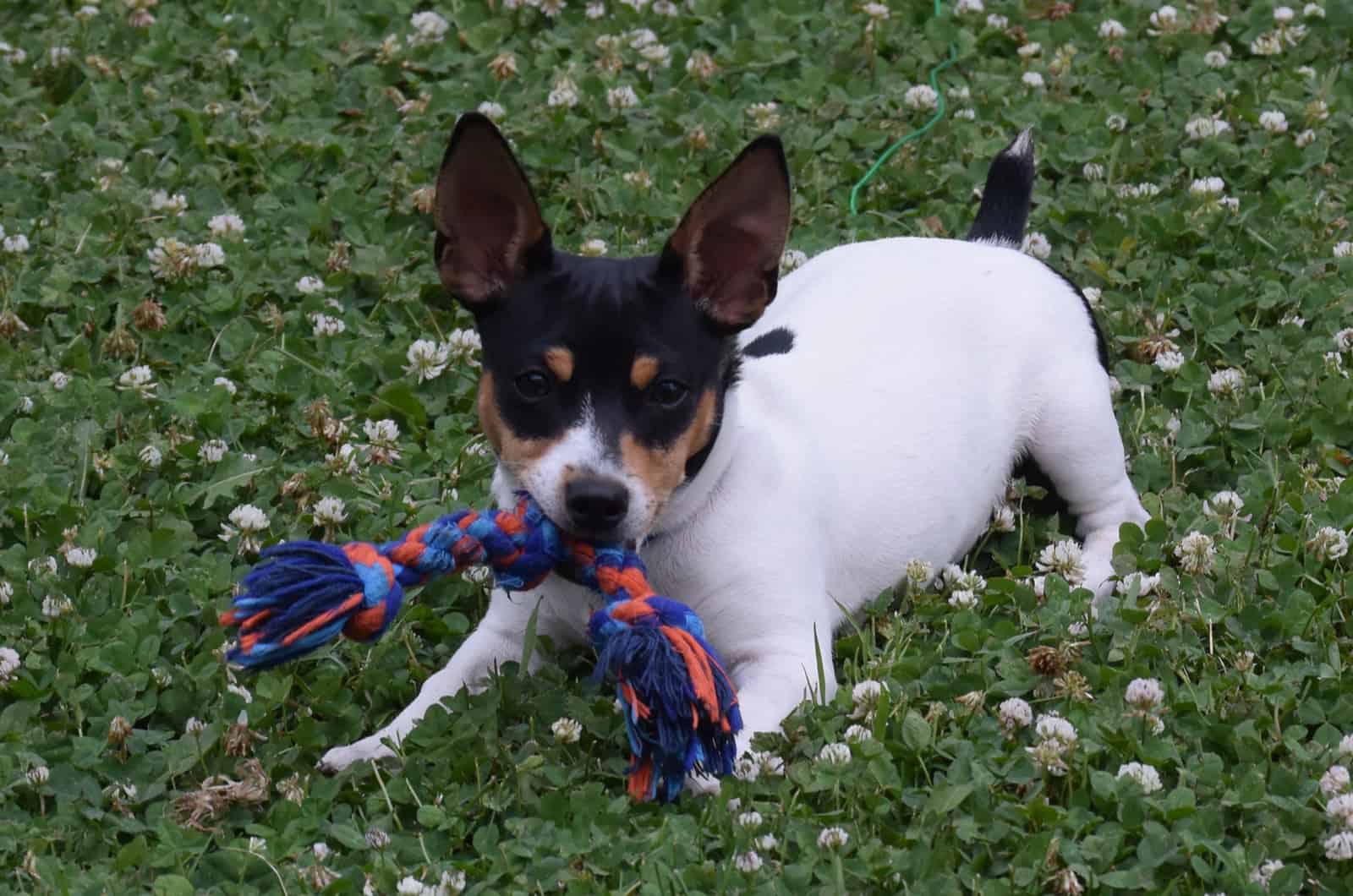Have you heard of the Rat Terrier dog breed? Members of this dog breed are adorable little escape artists who love to dig. They really do carry Terrier blood. Rat Terriers are funny, energetic, feisty, lively, vermin-chasing, and always active dogs. They don’t know the word “boring.”
These stubborn little creatures won’t bend over backward to please you, but you’ll truly love their company.
What’s so interesting about this dog breed is that they’re fairly new. President Teddy Roosevelt is believed to be the godfather of this breed as he gave them their name after his Terrier eradicated the rat infestation at the White House. The Rat Terrier is a public servant, for sure! These dogs are as American as it gets; almost a staple like apple pie!
Even though they’re quite mischievous (much like Chihuahuas), with proper training and socialization, their bad habits can be curbed, and the intelligent Rat Terrier can become a valuable member of any family. Thanks to the many efforts of breeders and Rat Terrier lovers, this breed is slowly but steadily gaining in popularity.
What makes them terrific examples of the canine world is that they’re excellent watchdogs and ultimate farm pups. They have strong jaws and move fast, perfect for chasing small vermin.
People often confuse them for smooth Fox Terriers or Jack Russell Terriers. But, true Rat Terrier lovers know how unique these dogs are.
Just like any Terrier, the purebred Rat Terrier is extremely stubborn. They will dig for hours on their way down to China, and they won’t back down easily. We advise all future Rat Terrier owners to save a spot in their yard where this dog can dig as much as it wants. They’re smart enough; they’ll figure out it’s the only allowed spot to dig in.
But, if you live in an apartment, you and your neighbors will have to deal with the Rat Terrier’s shrill yipping. If you don’t give them much-needed space to run as much as they want, they won’t hesitate to tell you.
Fun fact: Rat Terriers puppies are born with their ears up. Around the time their eyes begin to open, the ears start to drop. Some of those ears may stay down, but some may pop back up in a few weeks or months.
Highlights Of The Breed
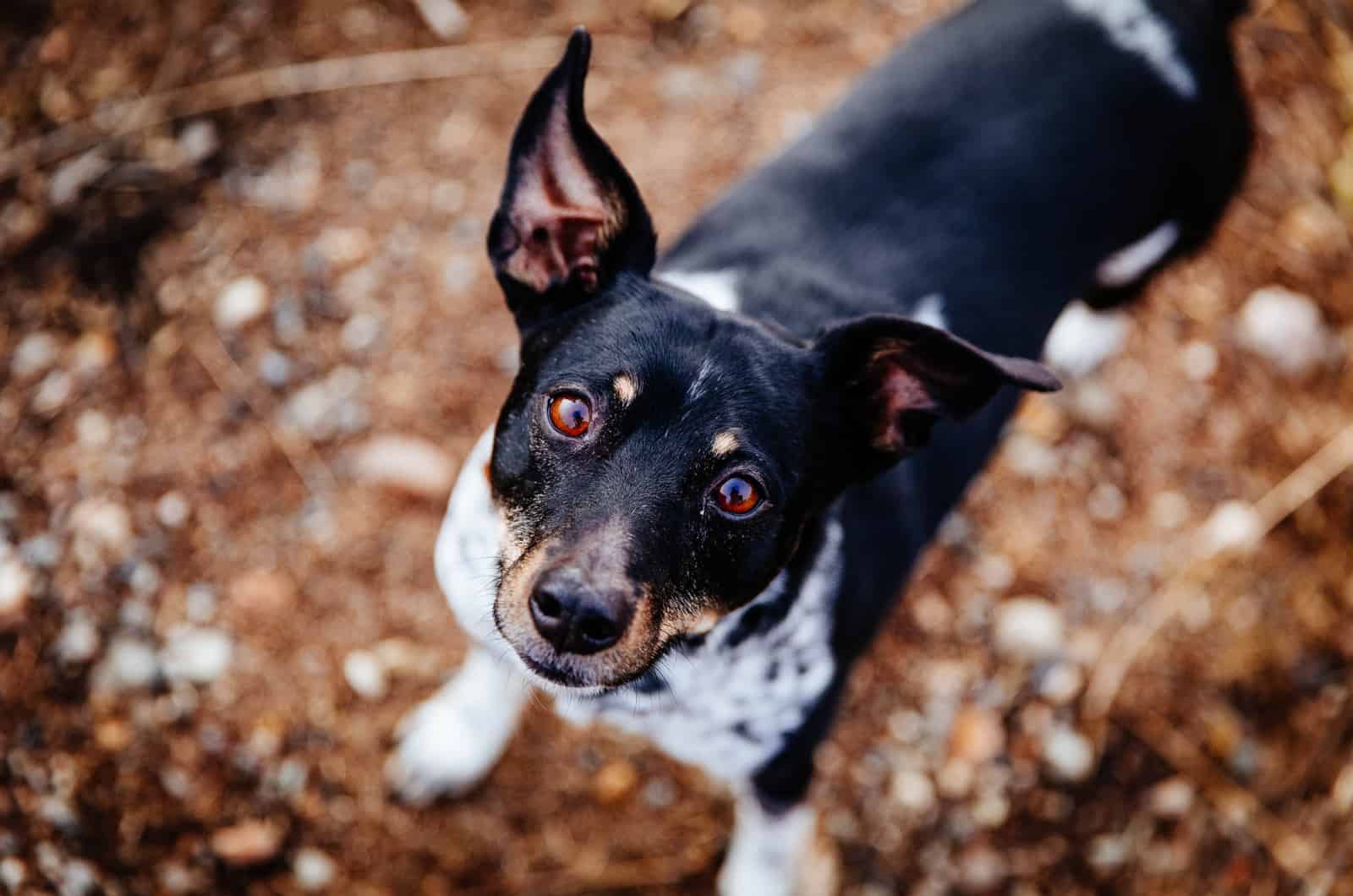
• Do you have people over all the time? Even though Rat Terriers are devoted to their families, they don’t really enjoy the company of strangers.
Their urge to dig, high prey drive, and running away might bother you a lot. Make sure that your fence is pretty high and well-secured.
• A Rat Terrier has lots of energy. Seriously, a lot! You will need to spend at least 40 minutes a day exercising your dog, or it may end up acting out, being destructive, and taking it out on your flowerbeds.
• Besides physical activity, Rat Terriers need mental stimulation too. A bored Rat Terrier will bark, chew stuff, and freak out.
• The Rat Terrier’s compulsion to chase doesn’t make them a good fit for walking off-leash. Even the calmest examples of the breed forget about their training the moment they see a squirrel in the park.
Never buy from irresponsible breeders, backyard breeders, puppy mills, or pet shops. If you want a healthy Rat Terrier puppy, you will need to do your research and find a reputable breeder that runs health tests and is open to providing test results if asked.
History Of The Breed

The Rat Terrier is a breed of working dogs from the USA that is the result of working with the Fox Terrier, Bull Terrier, Manchester Terrier, and the Old English White Terrier.
These pups were once farm dogs and hunters. The need for Rat Terriers to catch small prey and chase away pests made breeders include new strains into the breeding process in the 1910s and 1920s.
In the Midwest, the Rat Terrier was bred with Whippets and Italian Greyhounds. The result was a more versatile and faster dog that could help control the jackrabbit problem. The improved Rat Terrier was able to keep up with fast rodents.
In the Southern and Central American regions, the Rat Terrier was bred with the Beagle. The result here was a pack-oriented dog. This is where the strong sense of smell comes from. The speed comes from the Whippet.
In the 1920s, breeders introduced Toy Fox Terriers that were too big for their own breeding programs into the Rat Terrier’s breeding program. These new Terriers began the new, toy-sized offspring.
The Rat Terrier was a rather common dog on farms between the 1910s and 1940s. Their popularity eventually started to decline after farmers began solving the rodent problem using poison. By the 1950s, this dog breed was no longer as widespread. Only a handful of Rat Terrier breeders managed to resurface in the late 1970s.
The Decker Rat Terrier is a strain of the breed that is gaining popularity. It began with a dog owned by a hunter named Milton Decker. He thought his dog Henry possessed great qualities that should be preserved in a breeding program.
Decker succeeded in producing a large Rat Terrier with a fixed set of ears. This was a dog that would even retrieve from water. The Deckers hunted pigs, deers, cougars, and bears. They are quite feisty, but they’re still wonderful companions.
The year 1972 brought the first hairless Rat Terrier, a little hairless female, and a new strain of Rat Terriers. The Hairless Rat Terrier is known as the American Hairless Terrier. These come in two sizes, miniature and standard.
What Is The Difference Between A Rat Terrier And A Fox Terrier?
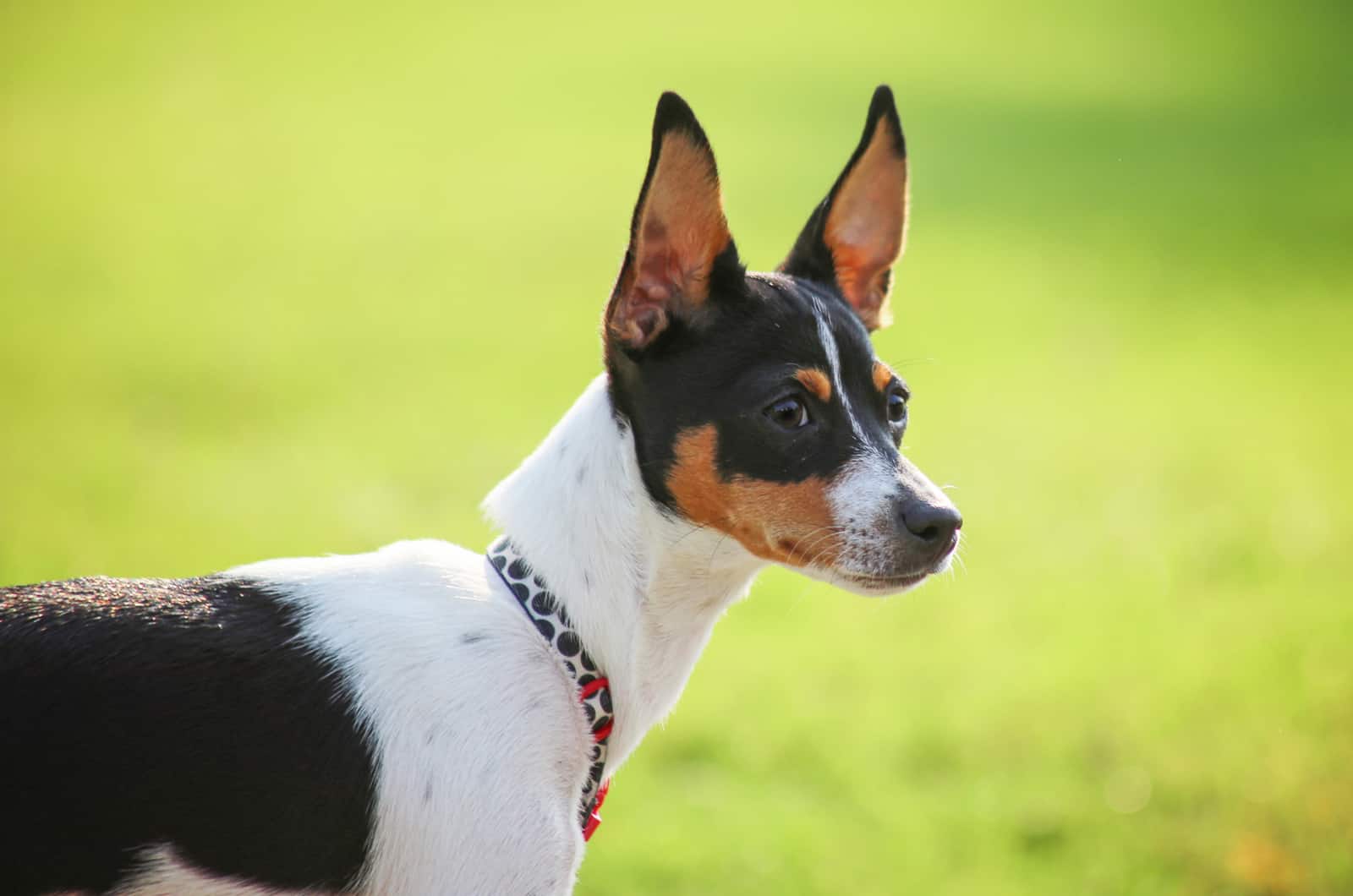
Fox Terriers and Rat Terriers are two separate dog breeds. However, they do look alike in so many ways you can easily mistake one for the other.
Rat Terriers have so much Fox Terrier in them they used to be considered a strain of Fox Terriers back in the day.
Toy Rat Terrier Size
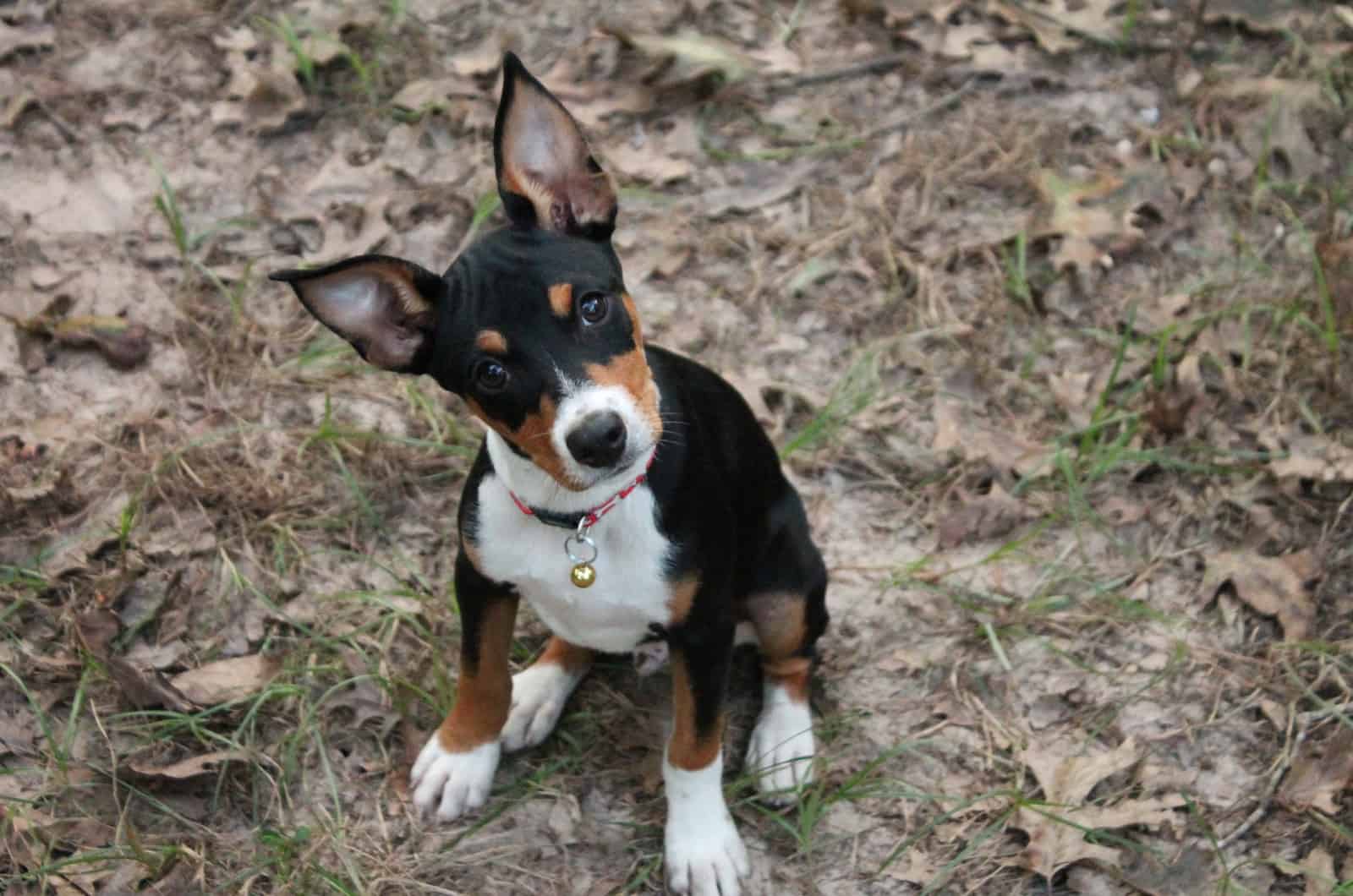
The American Kennel Club (AKC) does not recognize the Rat Terrier breed. However, the United Kennel Club (UKC) does, but breed clubs have different size standards.
The Rat Terrier is a small and sturdy dog that should be between 13 and 16 inches tall. The UKC doesn’t have the weight defined as each dog has a different weight for its height.
The Decker Rat Terrier is slightly bigger than the Rat Terrier. They should range between 22 to 40 pounds. Males are 16 to 19 inches tall, while females should be 16 to 17 inches tall.
The miniature Rat Terrier is really mini. They should weigh 10 to 18 pounds and shouldn’t be bigger than 15 inches in height.
The toy Rat Terrier is an even smaller dog. Their weight is between 5 to 10 pounds, and they shouldn’t be larger than 12 inches in height.
Toy Rat Terrier Personality
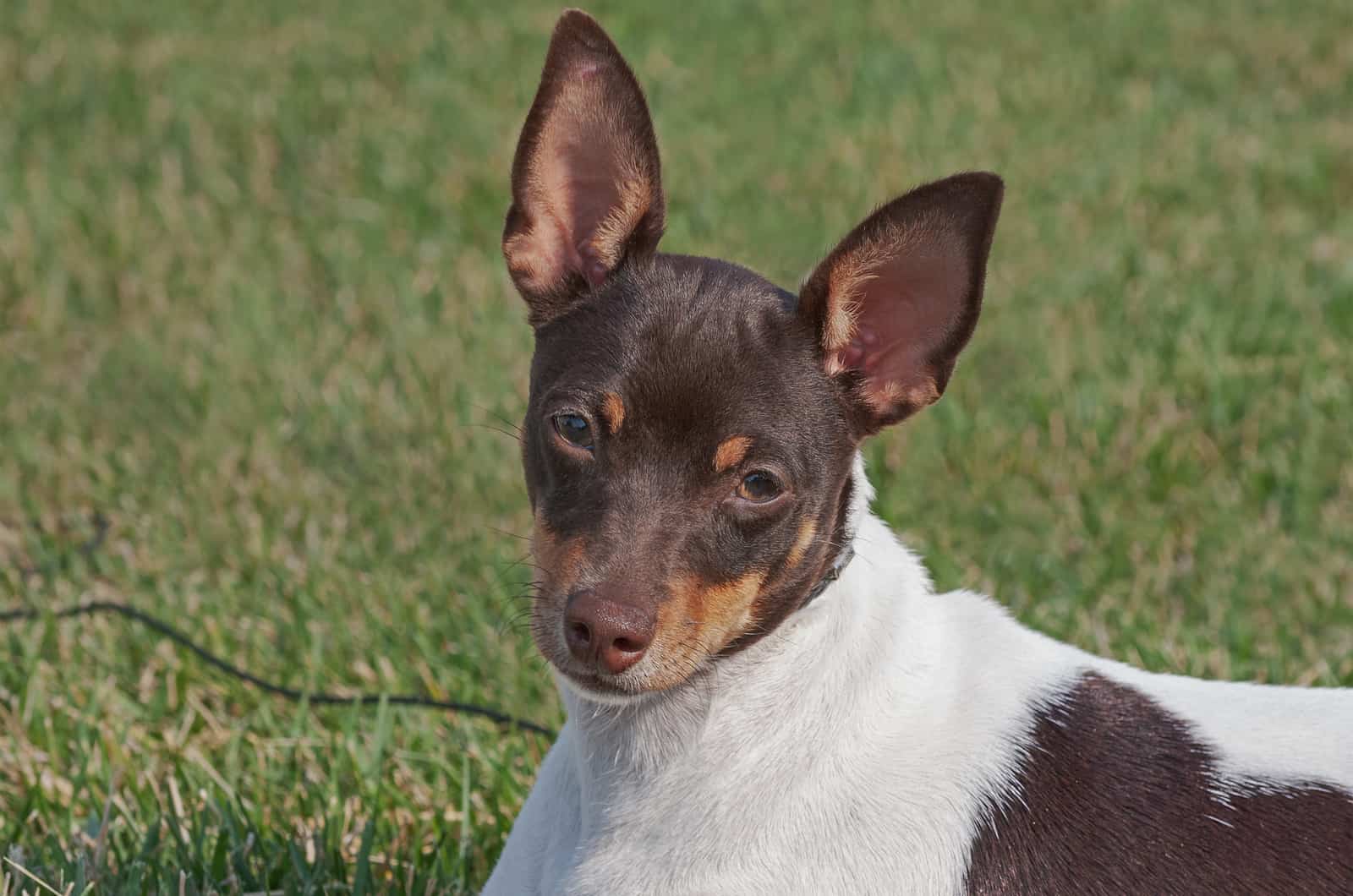
Intelligent, wary, and stubborn. These are the perfect words to describe this dog breed. This dynamic breed is generally well-behaved, but they can be aloof with strangers, especially if you’re not there. If you don’t socialize them in time, you may have serious problems with their aggressive behavior toward strangers and other animals.
These little balls of energy are absolutely fearless. It can be a wonderful trait if only they’re not aggressive.
Even though they’re so feisty, Rat Terriers are amazing family dogs, very perceptive, and intuitively respond to moods. They might not do everything they can to please you, but if you have a treat in your hand, they will follow you like crazy and obey every order.
Since this was once a farm dog, purposely bred to be one, the Rat Terrier needs a lot of exercise to drain their high energy bar and stop bad behavior. A tired dog is truly a good dog.
Every dog, including the Rat Terrier, needs early socialization. Expose them to new people, sights, sounds, smells, and experiences while they’re still puppies. It’s never too early to start with socialization. You can only raise a well-rounded dog by doing so!
Full Grown Toy Rat Terrier Health Issues
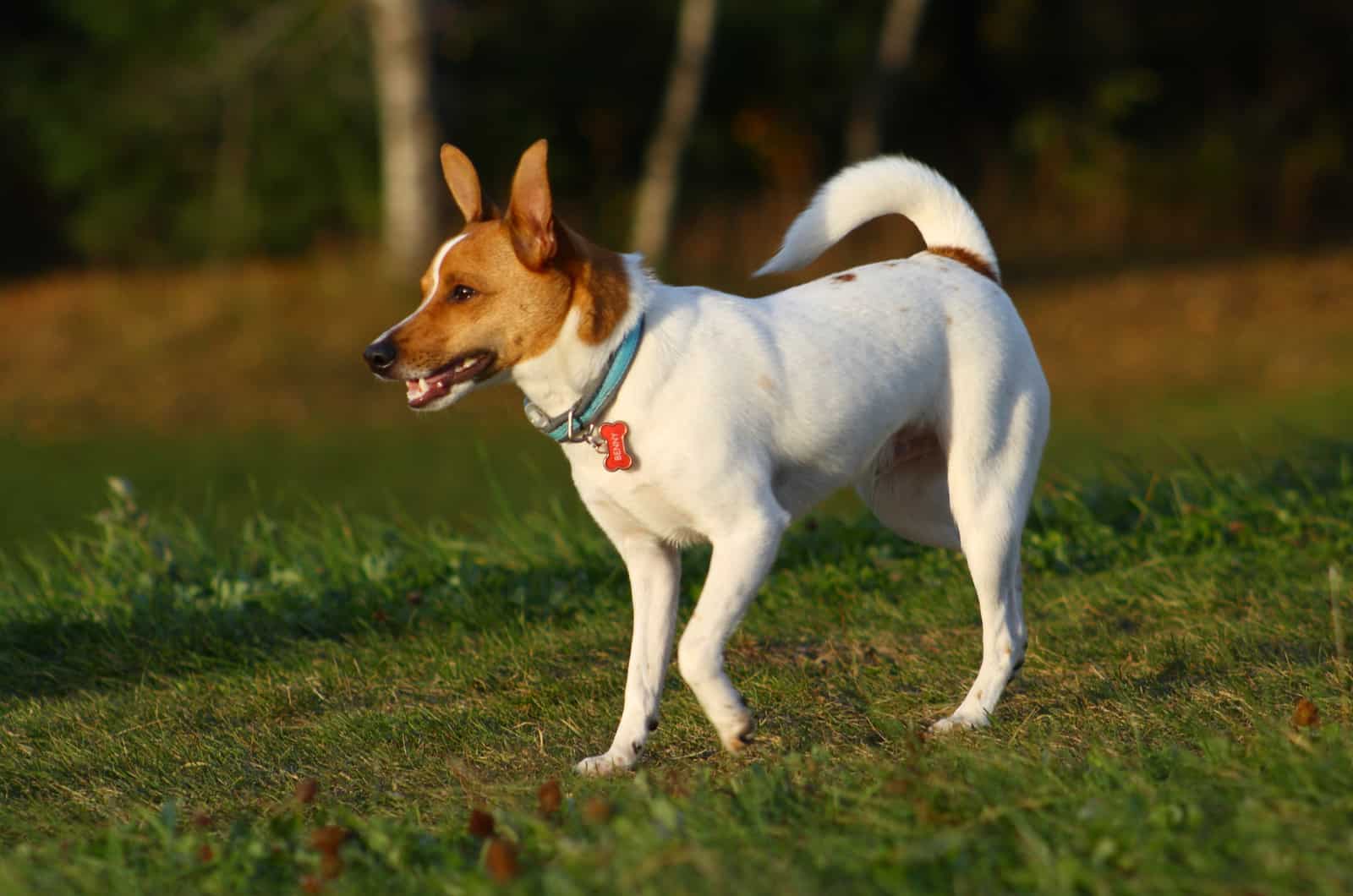
Rat Terriers are generally healthy dogs, but every dog breed can be prone to certain health issues. It’s important you are aware of them if you are considering getting this dog breed.
We’ve already mentioned how important it is to find a good breeder, someone who will show you health tests for both the puppy and its parents. These test results prove a dog was tested and cleared of certain diseases.
In Rat Terriers, you should expect to see health clearances from the Orthopedic Foundation for Animals (OFA) for hip dysplasia (with a score of fair or better), elbow dysplasia, hypothyroidism, and von Willebrand’s disease; from Auburn University for thrombopathia; and from the Canine Eye Registry Foundation (CERF) certifying that eyes are alright.
Here are which diseases strike the Rat Terrier dog breed:
• Allergies: Allergies are a common issue in dogs. The Rat Terrier is no exception here. We recognize three types of allergies, food, contact, and inhalant. Basically, your dog may be allergic to certain dog food, dog shampoos, flea powders, pollen, dust, etc. Treatment varies according to the symptoms and may include dietary restrictions, meds, or environmental changes.
• Incorrect Bite: Malocclusion, or incorrect bite, is a slightly deformed jaw structure that leaves the jaw misaligned. We recognize three types of incorrect bites, and they are all seen in Rat Terriers. An overshot bite is caused when the upper jaw is extended past the lower jaw. This causes difficulties in grasping, and the lower teeth may bite into the roof of the mouth. An undershot bite is when the lower jaw extends out past the upper jaw. This can be corrected with surgery. The last case is a wry mouth which is a twisting of the mouth caused by one side growing faster than the other. It causes problems with eating and grasping. In some cases, these incorrect bites can be self-corrected by the puppy at 10 months of age. But, if your puppy needs surgery, wait until it’s an adult dog. Corrective surgeries can include tooth extraction, crown height reductions, or the use of spacers.
• Patellar Luxation: This is also known as slipped stifles. It’s a common problem in small dogs. The patella is the kneecap. Luxation means dislocation of an anatomical part (as in a bone at a joint). Patellar luxation is when the knee joint slides in and out of place, causing pain. It usually happens in the hind legs. The pain can be crippling, but many dogs lead relatively normal lives with this condition.
• Demodectic Mange: This condition is sometimes called demodicosis. It is caused by the Demodex mite, which a mother dog passes to her offspring in early puppyhood. Luckily, the mites can’t be passed to humans or other dogs. It only goes from the mother to their puppies. Demodex mites live in hair follicles and don’t really cause problems. But, if your puppy has a weak immune system, it may develop demodectic mange. The signs of the disease are patches of red, scaly, balding skin that appear on the head, neck, and forelegs. This usually clears up on its own, but you should take your dog to the vet to prevent it from turning into the generalized form of the disease, which covers the entire body and causes infection.
Other health problems that may affect their lifespan include Legg-Calve-Perthes disease and cardiac and eye disorders.
Taking Care Of Your Miniature Toy Rat Terrier

If you plan on leaving your dog alone to go to work, then you should make sure your Rat Terrier goes through crate training. No matter the breed, puppies are curious. They love to explore and get into trouble. Also, they love chewing on stuff. Leaving out a brand new pair of shoes is not an option. Fixing their mistakes and covering potential vet bills is too much of a risk.
You should never keep your Rat Terrier in its crate for too long. A few hours a day, except when the dog is sleeping at night, is absolutely okay.
Feeding Your Toy Rat Terrier
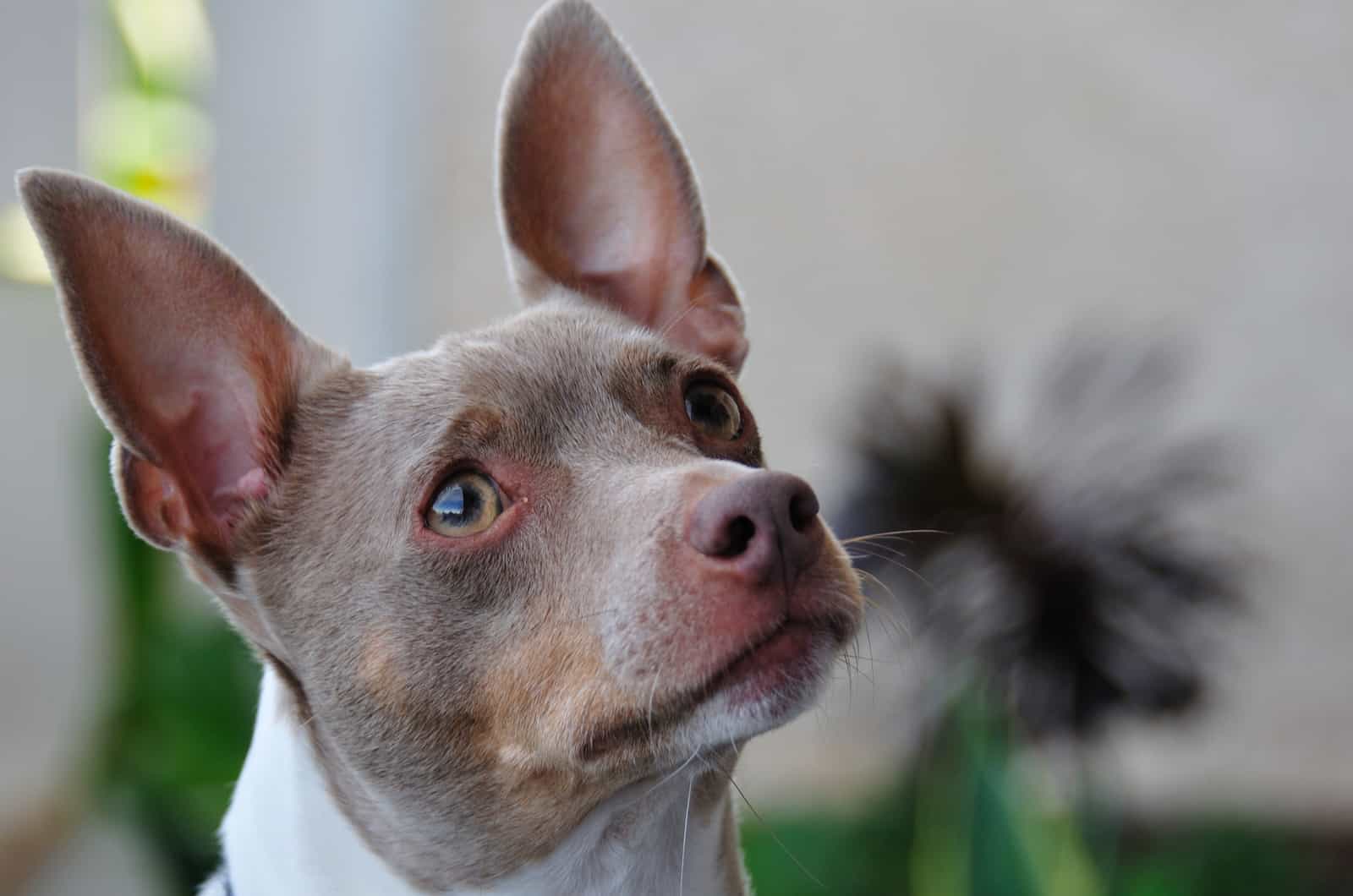
Recommended daily amount of high-quality dry food a day for your Rat Terrier:
• Less than 10 pounds: 1/4 to 1/2 cup per day
• 10–15 pounds: 1/2 to 1 cup per day
• 20–30 pounds: 3/4 to 1.5 cups per day
• 30–40 pounds: 1.5 to 2 cups per day
How much an adult dog eats depends on its size, age, activity level, build, and metabolism.
Dogs are individuals, just like people. They don’t all need the same amount of food. Highly active dogs need more nutrients than couch potatoes. You can only imagine how much food an active dog like the Rat Terrier needs!
The quality of dog food plays a major role too. The better the food is, the more nourishment it will provide your dog.
Keep your Rat Terrier in good shape by measuring its food and feeding it twice a day rather than leaving food out all the time. If you’re unsure whether it’s overweight, give it the eye test and the hands-on test. You should be able to see the dog’s waist. Place your hands on its back, thumbs along the spine, with the fingers spread downward. You should be able to feel the ribs, but they shouldn’t be visible. If you can’t feel the ribs without pressing too hard, your dog needs more exercise.
Coat Color And Grooming
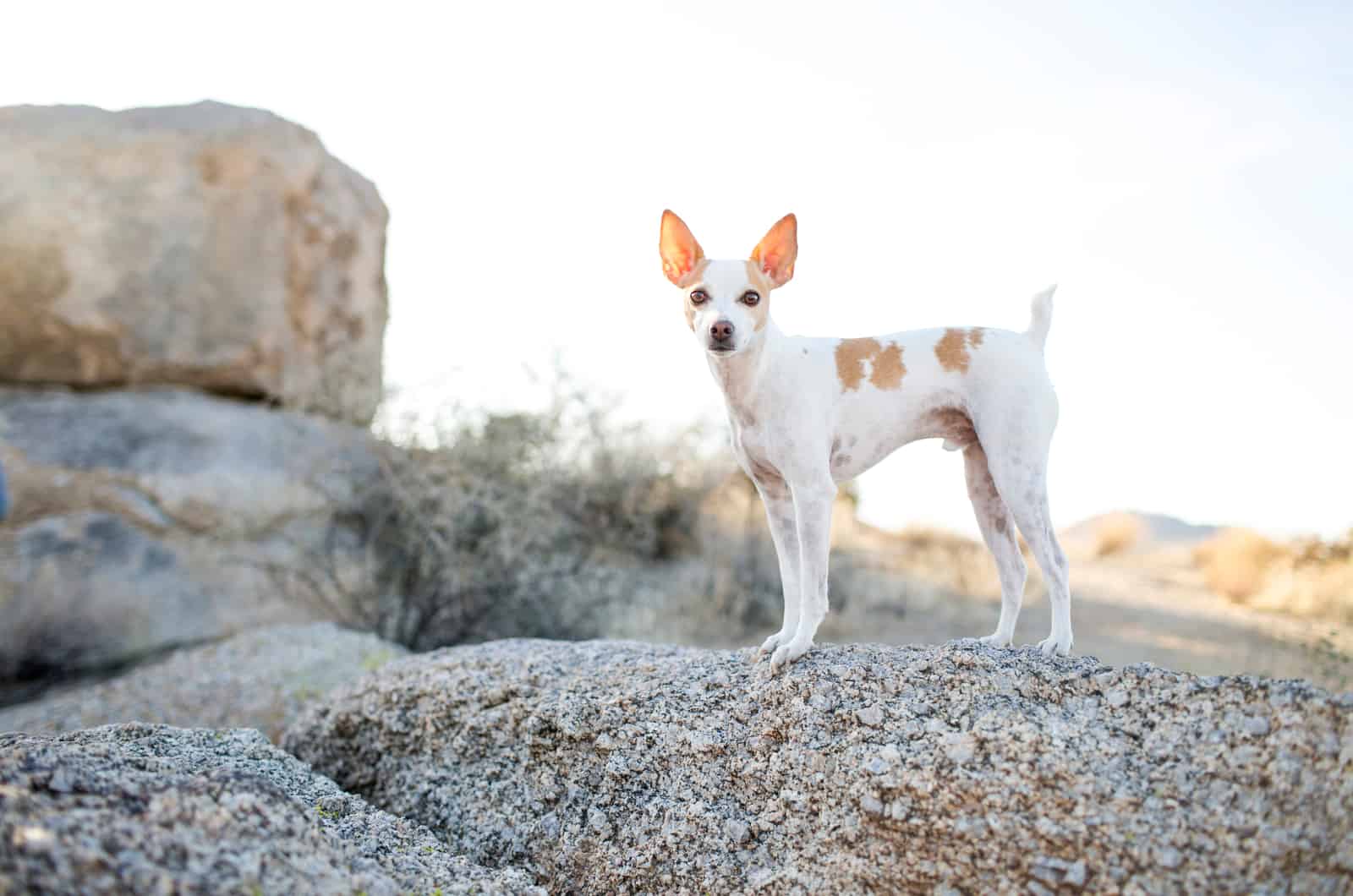
A Rat Terrier has a short and smooth coat with dense, shiny fur. They come in several different coat colors and combinations, including white, black with tan or rust, white and black or tan, red, lemon, blue, chocolate, apricot, and orange. Ticking or intermittent spots and dark colors are common too. All Rats have white markings.
The Rat Terrier is a low-maintenance dog. When it comes to grooming, they only need weekly brushing with a soft brush or a rubber mitt to remove loose hair. Shedding is heavier in spring and fall and also after whelping or heat cycles. Bathing should be done as needed.
You will need to brush your Rat Terrier’s teeth at least two or three times a week to remove tartar buildup and bacteria. If you can commit to it, daily brushing is even better!
Nails should be trimmed once or twice a month if the dog doesn’t wear them down naturally. Long nails cause pain and other issues. Dog toenails have blood vessels in them, so if you cut too far down, you can cause bleeding. If you’re not experienced trimming dog nails, maybe you should leave it to the experts.
Ears should be checked weekly for redness or bad odor. Those are indicators of infection. When you check the dog’s ears, you should wipe them with a cotton ball dampened with a gentle, pH-balanced ear cleaner. Don’t insert anything into the ear canal; you need only clean the outer ear.
As you groom your dog, you should check for sores, rashes, or signs of infection like redness or tenderness on the nose, mouth, eyes, and feet. Eyes should always be clear with no redness or discharge. Careful weekly examinations may prevent some serious health problems in the future.
Are Rat Terriers Hypoallergenic?
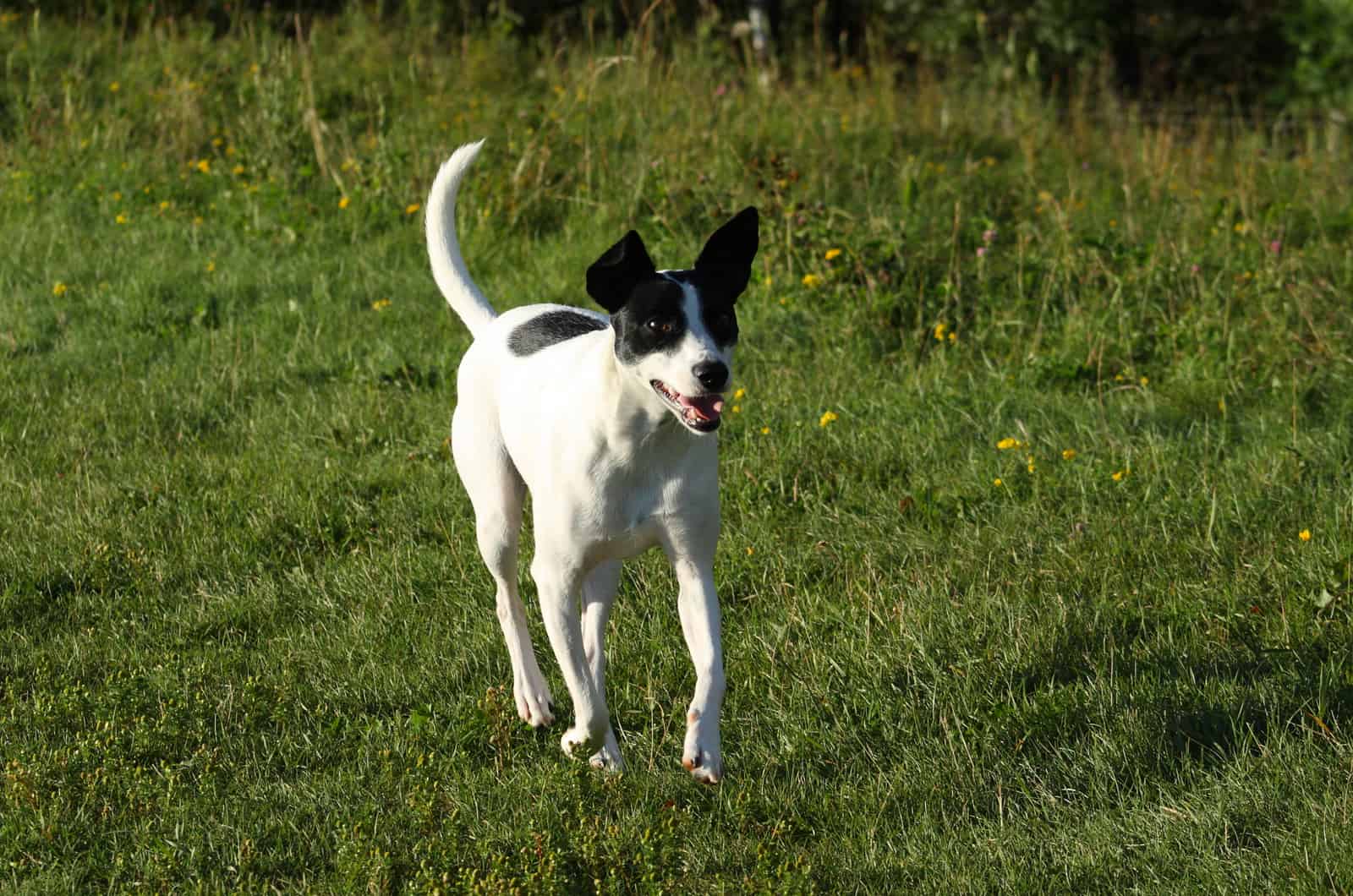
Unfortunately, no, Rat Terriers are not hypoallergenic. They shed all year round, but the biggest shedding occurs in the spring and fall. As we already said before, weekly brushing will control their loose hairs.
Toy Rat Terrier Lifespan
Ratties have a rather long average lifespan of 15 to 18 years! With proper care and regular vet checkups, your Rattie may live up to those amazing 18 years, or even more! Enjoy your time while it lasts. You truly have a lot of it to spend with these cuties.
Toy Rat Terriers, Children, And Other Pets

Even though Rat Terriers who aren’t used to children should be supervised around them, most Rats are generally wonderful with kids, even those who aren’t a part of their family.Rats are extremely friendly with kids in their family, so much so they even sleep under the covers with them.
However, you should always teach your kids how to approach and touch dogs and supervise interactions between them to prevent any biting or ear or tail pulling.
Kids should never approach dogs while they’re eating or sleeping or try to take the dog’s food away.
Although they may disagree with other dogs regarding food and sleeping arrangements, Rat Terriers like other dogs. They rarely ever show aggression towards other pets in the house.
In fact, many Rat Terriers love to play with dogs in the park, so you will need to be on the lookout for aggression coming from other dogs. Terriers are size-blind, and they won’t hesitate to attack a German Shepherd or other bigger dogs.
Ratties are prey-driven, so any small, quick-moving pets like hamsters, mice, chinchillas, or even tiny cats are considered prey and may be chased. But, if you raise your Rattie along with other pets, they will get along and consider them family members.
Rescue Groups
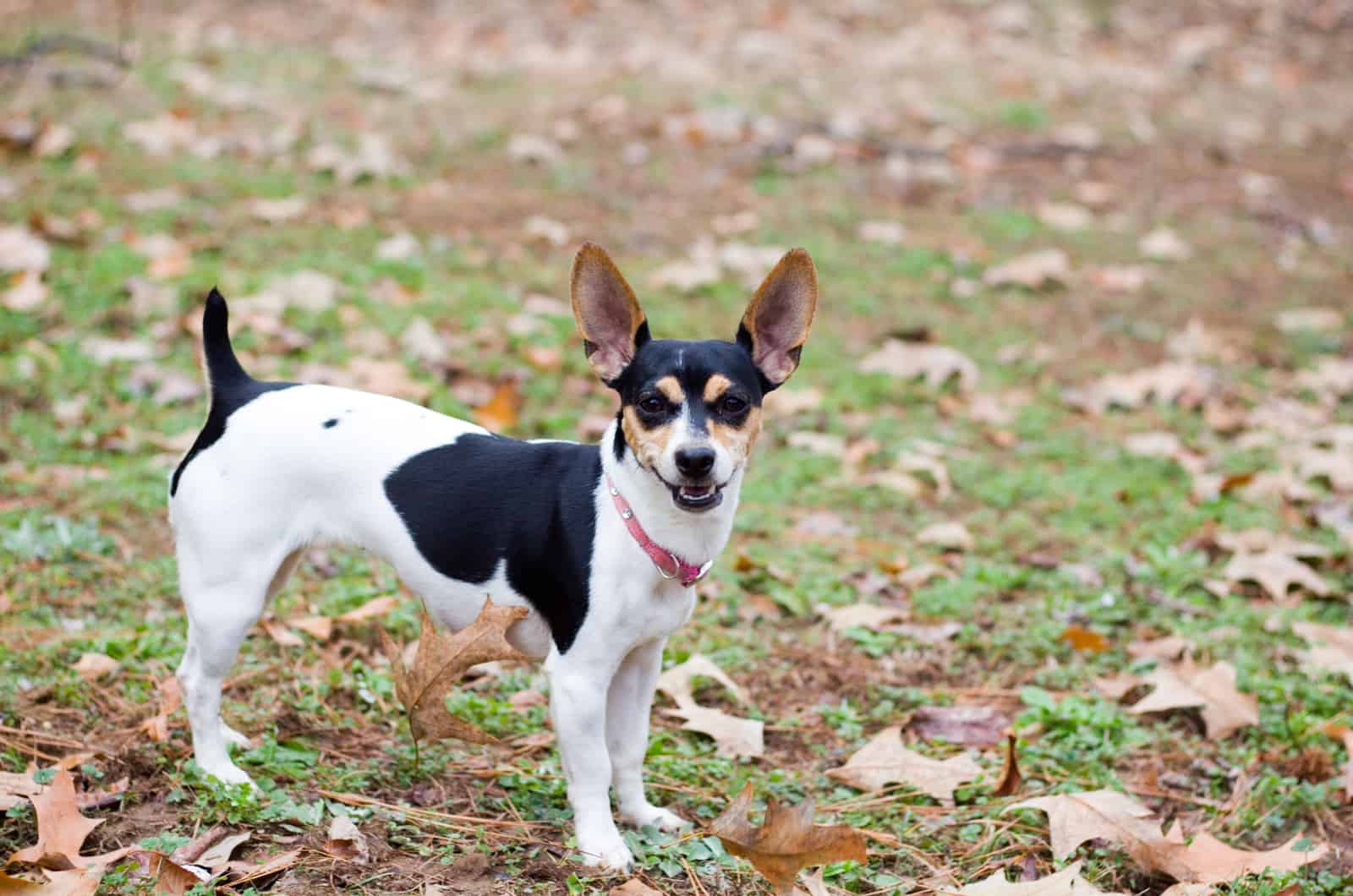
Unfortunately, Rat Terriers are often purchased without any understanding of how to raise them. There are many Rat Terriers in need of adoption or fostering, and there are numerous rescue centers and shelters that carry these dogs.
If you can’t find a Rattie at your local shelter, maybe you should check out these organizations:
• American Rat Terrier Rescue
• Ratbone Rescues
• Rat Terrier Club of America
Should I Get A Rattie?

Photo from: @pinkkim_mila
If you’re an active person who enjoys a daily jog in the park and doesn’t really snooze on the couch, you’re gonna love toy Rat Terriers as your family pets. These adorable little pups are way too energetic, but they make up for it with their lovely temperament and affection towards all family members.
So, should you get a toy Rat Terrier?
Yes!
It’s a huge yes to tiny wet kisses and zoomies around the house!
Read Next:
• 40 Rat Terrier Mixes You Never Thought Were Real
• The 7 Best Rat Terrier Breeders In The U.S.
• Toy American Eskimo Dogs Have Something In Common With Thor
